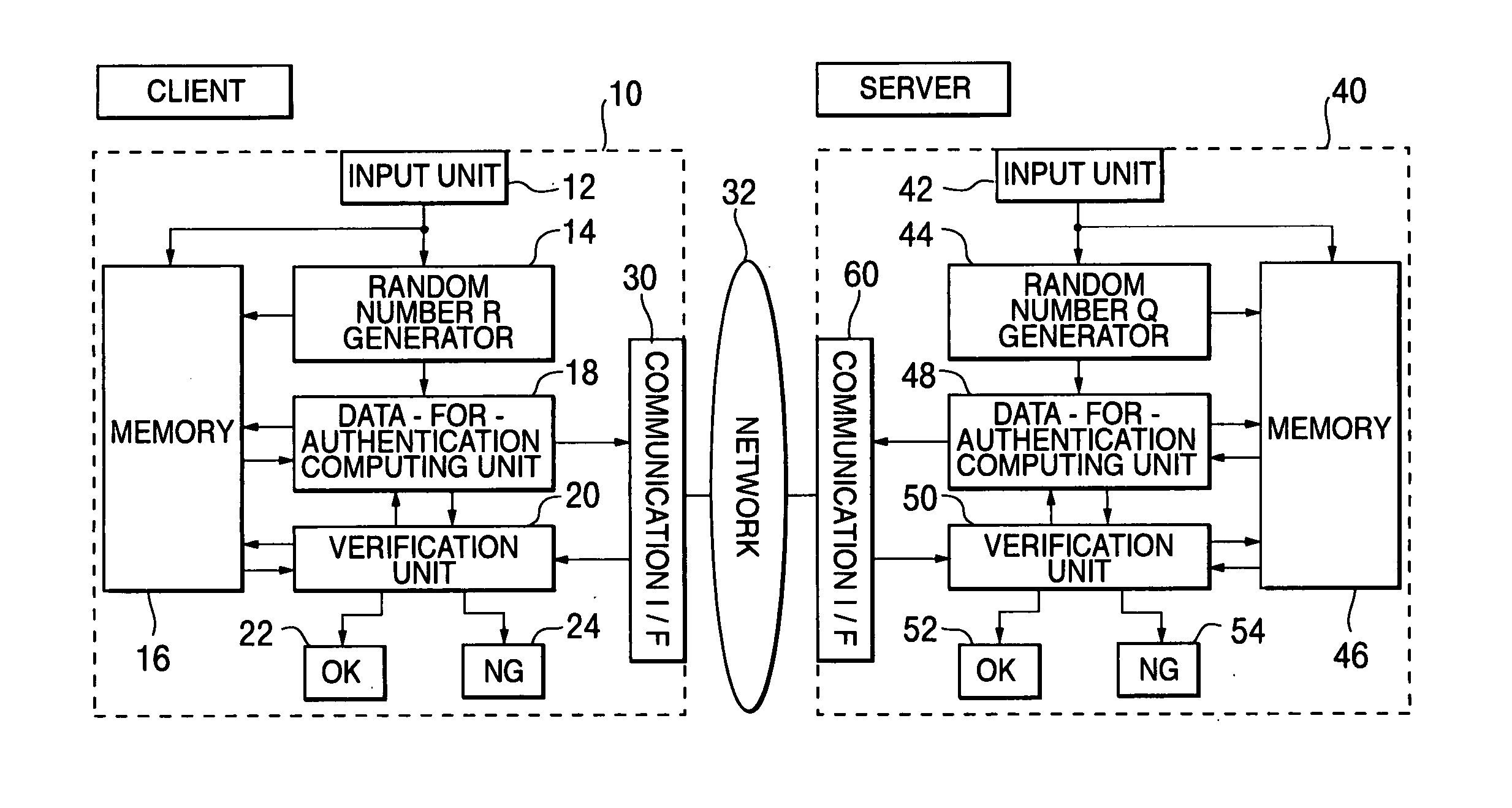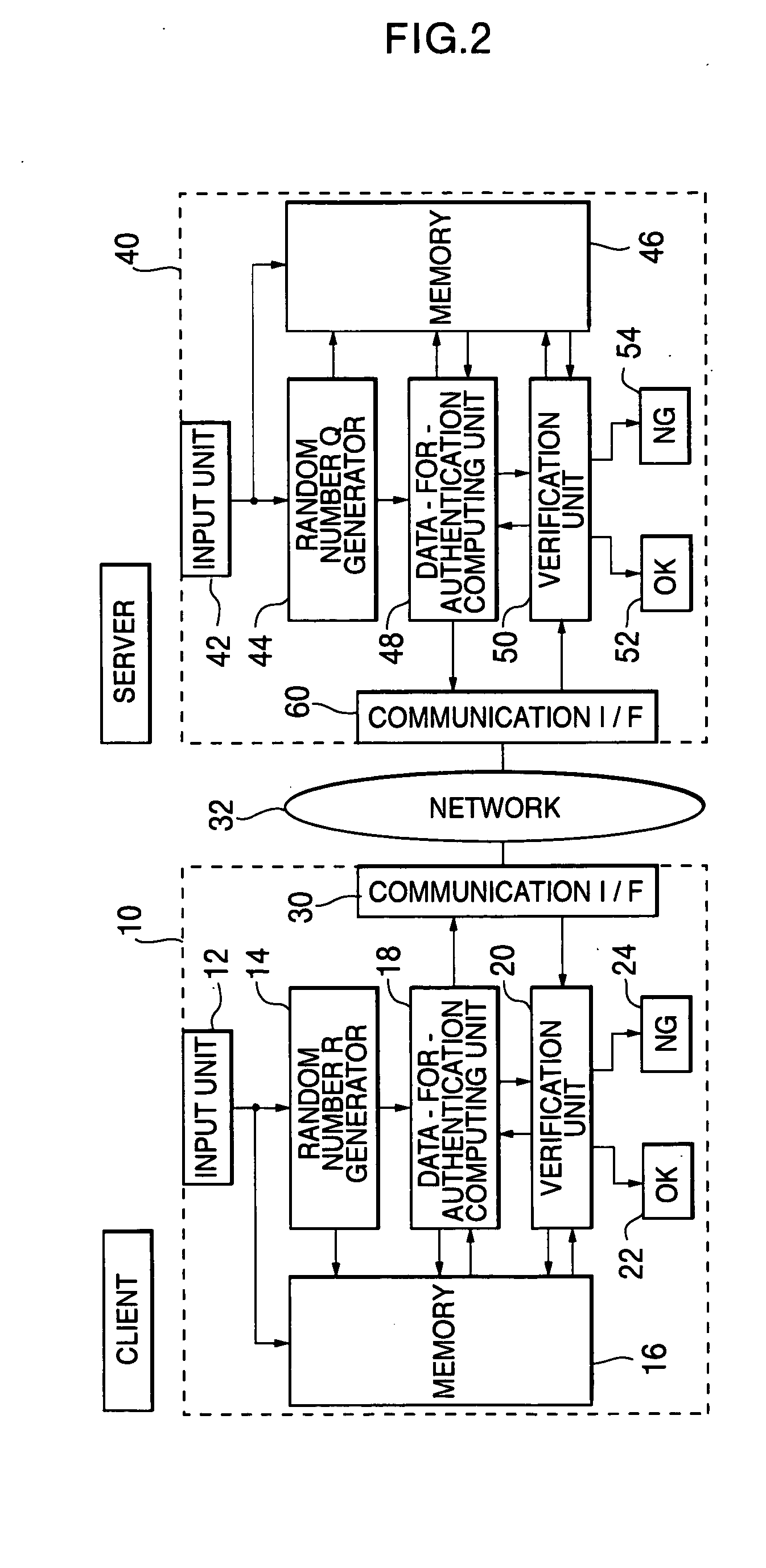Inter-authentication method and device
a technology of authentication method and authentication method, applied in the field of authentication method and device, can solve the problems of inability of third parties inability to ensure the security of future oids, and inability to predict the next oid conveniently, so as to reduce the number of communication times, enhance the security of communication, and improve the convenience
- Summary
- Abstract
- Description
- Claims
- Application Information
AI Technical Summary
Benefits of technology
Problems solved by technology
Method used
Image
Examples
example 1
[0104] Hereinafter, one example of the preferred embodiments of the present invention will be explained in detail referring to the attached drawings. FIG. 2 is a block diagram showing a schematic configuration of a client computer and a server computer concerning the first embodiment of the present invention, and a schematic configuration of a network system to which the present invention can be applied. The first embodiment represents an application of the present invention to a case of mutual authentication between the server computer and the client in a network.
[0105] In FIG. 2, the network system is configured by one or a plurality of client computers 10 including at least CPU and one or a plurality of server computers 40 including at least CPU, which are connected to the network (for example, the Internet) 32, respectively via modems, routers, TAs (Terminal Adapters) and the like. These computers can give and receive information with each other by the mutual communication via ...
example 2
[0182]FIG. 5 is a schematic configuration which shows the second embodiment of the authentication system concerning the present invention. The authentication system is schematically configured by a server (the second device) 10 and a client (the first device) 20, which are mutually connected via a network 40 such as a public circuit network and the Internet. In the present embodiment, a plurality of servers A, B, C . . . for providing various services are connected to the server 10, and the server 10 functions as an authentication server to determine whether or not accessing to the servers A, B, C . . . is possible.
[0183] As shown in FIG. 6, the server 10 is configured by CPU 11, RAM 12, storage unit 13, input unit 14, display unit 15 and communication unit 16 and the like, and each part is connected via bus 17.
[0184] The CPU (Central Processing Unit) 11 stores in the RAM 12 various programs stored in the storage area of the storage unit 13, various instructions inputted from the ...
example 3
[0214] In the second embodiment as described above, a function value of a hash function is obtained, in which the encryption key (variable shared key) generated in the previous session is used as an argument, and this function value is used as onetime ID (SIGNAL) of the current session. In the third embodiment, a function value of the hash function is obtained, in which the shared key generated in the previous session and a communication sequence in the current session are used as arguments, and this hash function value is used as a onetime ID in each communication timing of the current session. The third embodiment is similar to the second embodiment besides a part peculiar to the third embodiment. In the third embodiment, same reference numbers are given to the parts same as those of the second embodiment, and the descriptions thereof will be omitted.
[0215]FIG. 9 is a diagram which explains the third embodiment of the authentication method concerning the present invention. In the...
PUM
 Login to View More
Login to View More Abstract
Description
Claims
Application Information
 Login to View More
Login to View More - R&D
- Intellectual Property
- Life Sciences
- Materials
- Tech Scout
- Unparalleled Data Quality
- Higher Quality Content
- 60% Fewer Hallucinations
Browse by: Latest US Patents, China's latest patents, Technical Efficacy Thesaurus, Application Domain, Technology Topic, Popular Technical Reports.
© 2025 PatSnap. All rights reserved.Legal|Privacy policy|Modern Slavery Act Transparency Statement|Sitemap|About US| Contact US: help@patsnap.com



